Are We Literally Washing Micro Plastics Into the Sea?
My daughter came home from her high school Environmental Science class last year talking about plastic fibers released when we wash our fleece. She said they are part of the ocean plastics problem, showing up in seafood we eat and even in our own bodies. Sounds like the plot from a bad horror movie. I have been in denial ever since. Give up straws? Sure, but give up my beloved fleece, a mainstay of life in the Pacific Northwest? Please, no not that. So when asked if I wanted to write a blog for our volunteers, I was ready to dive in and learn more about this topic. Without going too far down the internet rabbit hole, here is what I found out.
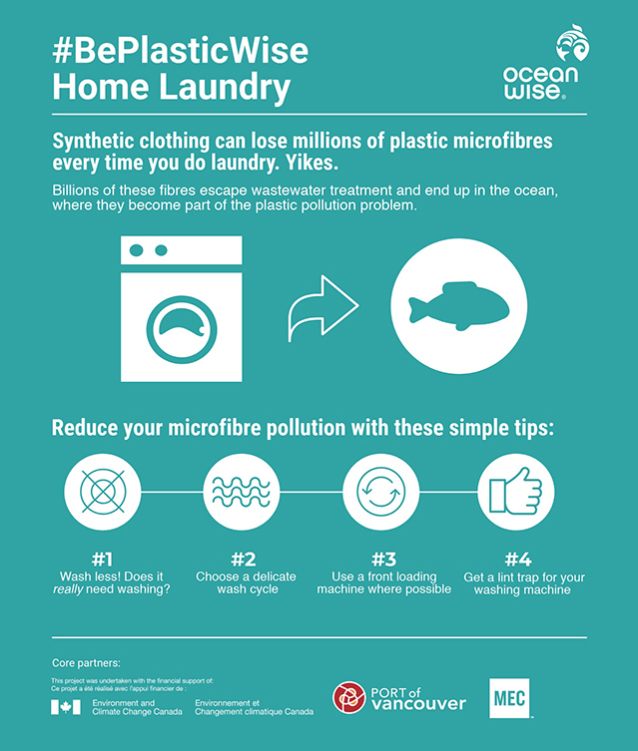
Ocean Wise’s Plastic Lab, a research arm of the Vancouver Aquarium, has been studying microplastics since 2014. Here are the highlights from studies they have conducted that were reported in a February 2019 Patagonia blog post.
A study of seawater from off the coast of British Columbia, Canada, found that over 70% of all plastic particles were fiber shaped. Other researchers studying the Atlantic Ocean report that fibers comprise 90% or more of the microplastic particles found. In such large numbers, and because these fibers are so small, they are a threat to marine life that mistake them for food.
In Spring 2018, Ocean Wise partnered with Patagonia, Arc’teryx, REI, MEC (Mountain Equipment Co-op), and Metro Vancouver to begin a multi-phase research program to investigate the sources of synthetic microfiber pollution, and to identify the best science-based solutions to the problem.
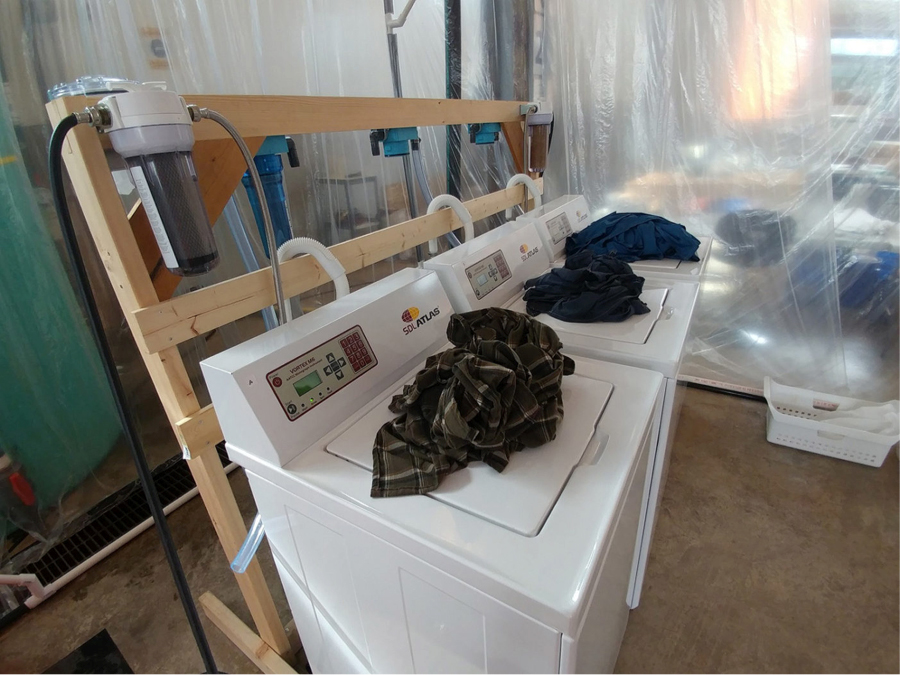
The study found that textiles shed between 31,000 and 3,500,000 fibers per load during normal laundering in household washing machines. Not all textiles shed equally. For example, ‘fluffy’ textiles like fleece, as well as textiles made of spun staple yarns and textiles pre-treated with brushing are the highest-shedding types. Some fabrics shed a large amount during the very first wash, and then shed little.
The laundry study was carried out with commercial-grade test washers that simulate a cycle in a typical home washing machine. Photo: Mathew Watkins
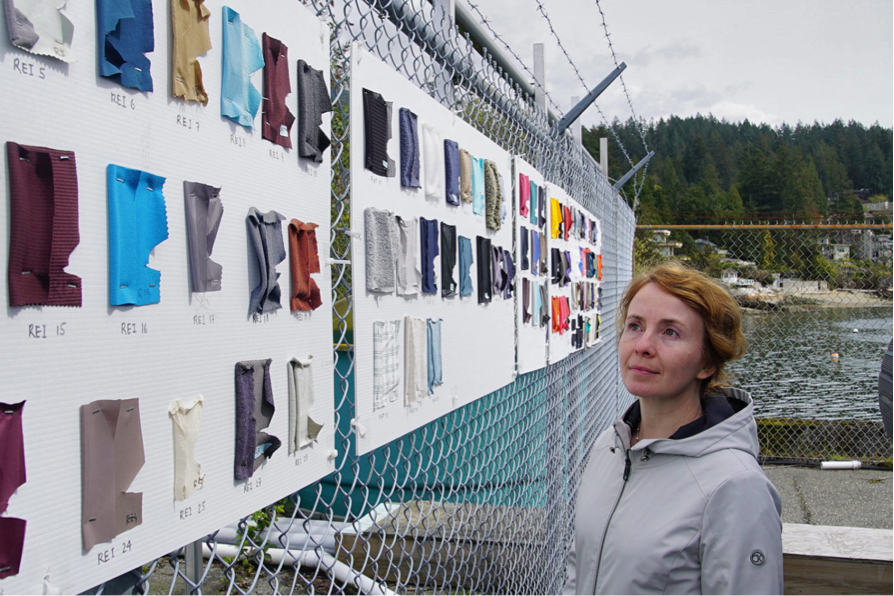 Data from the laundry study and the weathering study was used to create a reference library of spectra and a shedding catalog for the most common textiles used in outdoor apparel, a valuable resource that may help researchers to identify microscopic textile fibers and trace pollution back to its source.
Data from the laundry study and the weathering study was used to create a reference library of spectra and a shedding catalog for the most common textiles used in outdoor apparel, a valuable resource that may help researchers to identify microscopic textile fibers and trace pollution back to its source.
Katerina Vassilenko from Ocean Wise's Plastic Lab stands next to fabric swatches tested in the weathering experiment. Photo: Lorand Szasz
The Ocean Wise researcher’s reported that the differences in shedding rates between textile types and over time provides opportunities for manufacturers to modify practices to reduce microfiber pollution.
A 2016 study reported in the journal Environmental Science & Pollution looked at the amount of fiber released when washing and drying new fleece blankets. They concluded “that cumulatively large quantities of microplastics are released into the environment from this source.” In addition, they reported the following results:
“Results confirm domestic washing of textiles and garments as a constant and widespread source of plastic microfiber emissions into the environment.” They found that the first washing released the most fibers by a factor of 2-3 times. After 7 washings the amount of the fiber release leveled off. “A key result of this study is the indication that fibers are emitted throughout the lifetime of the garment.”
“Release of fibers during tumble drying was approx. 3.5 times higher than during washing. However, dryers have built in filters.”
“These results show that installation and maintenance of a relatively simple and robust filter to washing machine wastewater could prevent most of the emissions.”
“Previous studies have shown that the majority of fibers released during washing are removed in wastewater treatment plants where these are used. “
The final study I am sharing results from, Rochman et al, investigated the presence of microplastics and fibers in fish and shellfish sold for human consumption in Indonesia and California.
For the California samples, “of all species purchased, anthropogenic {human caused} debris was present in the gut content of eight (67%) of all fish species sampled, including jacksmelt, Pacific anchovy, yellowtail rockfish, striped bass, Chinook salmon, blue rockfish, Pacific sanddab and lingcod and in the Pacific oyster. Within each species, we found anthropogenic debris in 29% of jacksmelt, 30% of Pacific anchovies, 33% of yellowtail rockfish, 43% of striped bass, 25% of Chinook salmon, 20% of blue rockfish, 60% of Pacific sanddabs, 9% of lingcod and 33% of Pacific oysters.”
”All anthropogenic debris found in fish from Indonesia was composed of plastic, whereas in fish from the USA only 20% of anthropogenic debris found in fish could be confirmed as plastic. In contrast, the majority (80%) of anthropogenic debris found in fish from the USA was composed of fibers from textiles."
The authors suggest this is due to differences in waste treatment practices. In Indonesia, large of amounts of waste is dumped directly into the sea and presumably includes a large portion of plastics. In California, “there are more than 200 wastewater treatment plants discharging billions of liters of treated final effluent just off shore." ”Even though treatment results in a reduction of many contaminants, synthetic fibers from washing machines can remain in sewage effluent, and may be delivered to aquatic habitats in large concentrations via wastewater outfalls. One study found one fiber per L of wastewater effluent.”
Take Away
One component of microplastic waste in the environment are fibers from our synthetic clothing. They are not captured completely by wastewater treatment plants and they have been found in fish and shellfish. What level of threat the fibers pose to the sea life that ingests them and the humans that in turn ingests the seafood has not been fully determined. The fibers pose both a potential physical hazard in the digestive system as well as being a source of hazardous chemicals that have an affinity for attaching to the surface of plastics.What We Can DoTo reduce the amount of plastic fibers released by your washing process Oceanwise recommends that you:
The Sierra Club website has these helpful suggestions:
- A German company has created a laundry bag you place your fleece items in that is designed to trap microfibers during washing - the GUPPYSAFE washing bag.
- Consider items made with fabrics treated for odor control that require less washing. (I know - this raises issues about what chemicals are they being treated with.)
- Choose natural fiber clothing instead such as wool, down, leather, cotton and other non-plastic textiles.
Sources
Teaming up to get to the bottom of microfiber pollution. Stephen Chastain. 1 Feb 2019. https://www.patagonia.com/blog/2019/06/what-were-doing-about-our-plastic-problem/Your fleece jacket pollutes the ocean: here’s the possible fix. Catherine O'Connor. Outside. 25 May 2017. https://www.outsideonline.com/category/clothing-apparel
Are we eating our fleece jackets?: microfibers are migrating into field and food. Jessica Boddy. NPR. 6 February 2017. 1:21 PM ET. https://www.npr.org/sections/thesalt/161357412/food-for-thought
Emissions of microplastic fibers from microfiber fleece during domestic washing. U. Pirc & M. Vidmar & A. Mozer & A. Kržan. Environ Sci Pollut Res. 22 September 2016
https://www.researchgate.net/publication/308491550_Emissions_of_microplastic_fibers_from_microfiber_fleece_during_domestic_washing
Anthropogenic debris in seafood: plastic debris and fibers from textiles in fish and bi- valves sold for human consumption. Rochman CM, Tahir A, Williams SL, Baxa DV, Lam R, Miller JT, Teh FC, Werorilangi S, Teh SJ (2015). Sci Rep 5:14340.
https://www.nature.com/articles/srep143405 Ways to dress cozy without shedding so many microfibers: how to prevent your outerwear from polluting waterways with plastic. Fink, Bill. Sierra Jan/Feb 2019.
https://www.sierraclub.org/sierra/2018-1-january-february/gear-guide/5-ways-dress-cozy-without-shedding-so-many-microfibers
The Skagit Plastic Reduction and Recycling Coalition is a partnership between Friends of Skagit Beaches and Skagit County Solid Waste. We are working to educate Skagit County residents on the issues of plastic waste in the environment and involve them in taking action to avoid single-use plastics and recycle plastic right.
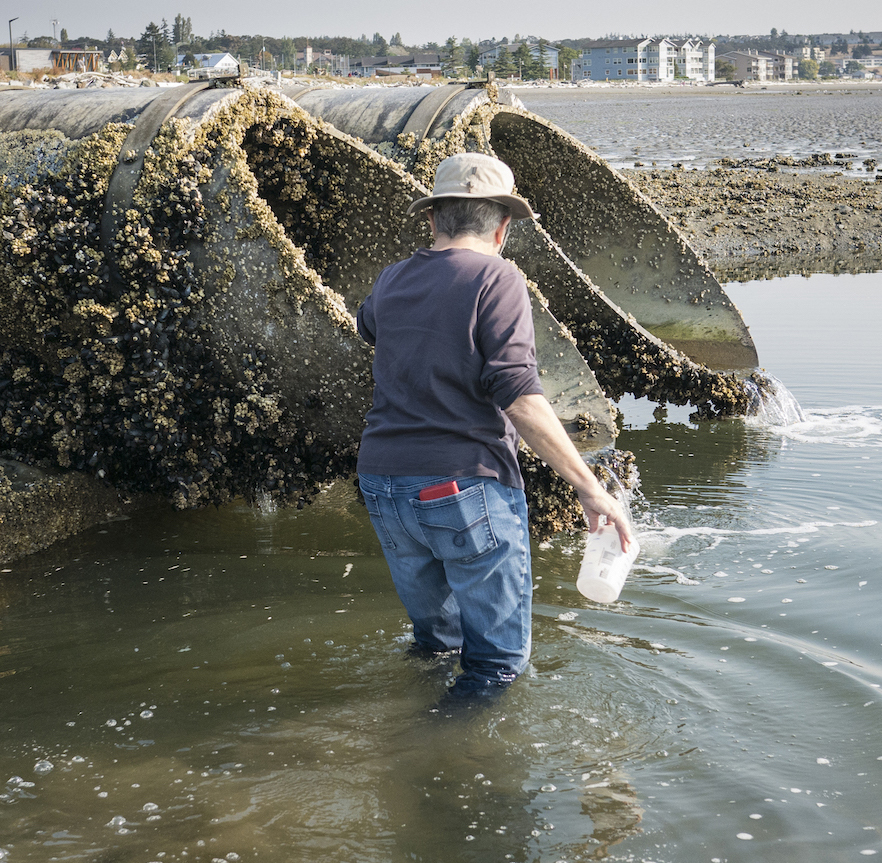 This work is funded by a grant from the National Fish & Wildlife Foundations’ Southern Resident Killer Whale Conservation Program for the purpose of improving habitat, food sources, and conducting research to support recovery of the Southern Resident Orca population within our region. The grant covers the costs for volunteer coordination, recruiting, training, equipping, and managing the data captured by our volunteers.
This work is funded by a grant from the National Fish & Wildlife Foundations’ Southern Resident Killer Whale Conservation Program for the purpose of improving habitat, food sources, and conducting research to support recovery of the Southern Resident Orca population within our region. The grant covers the costs for volunteer coordination, recruiting, training, equipping, and managing the data captured by our volunteers.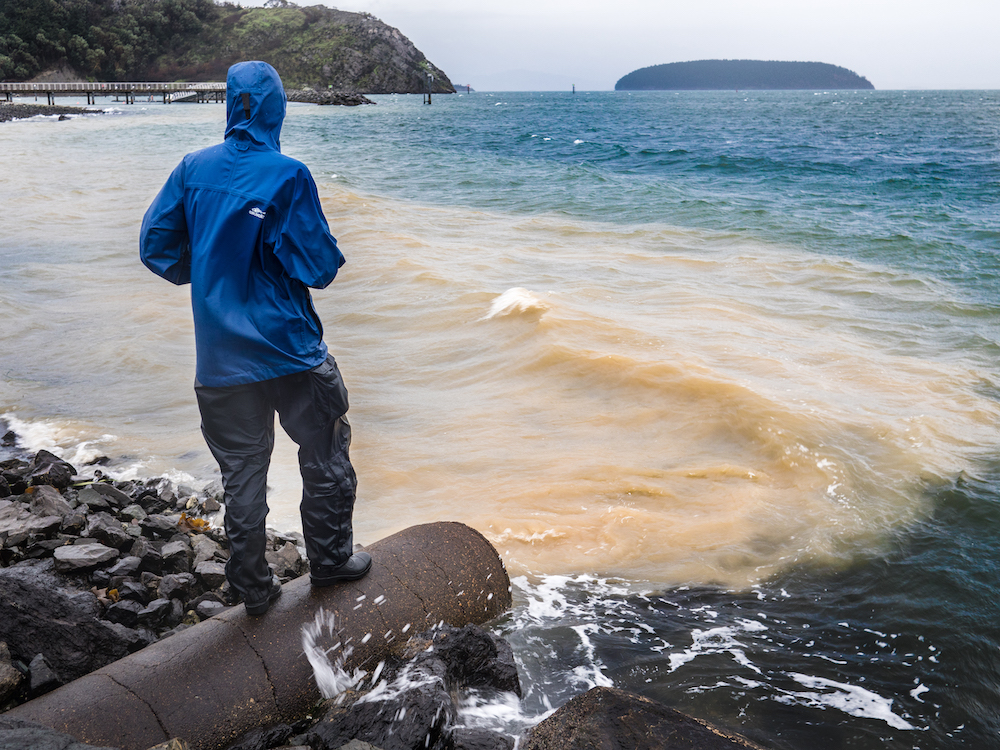
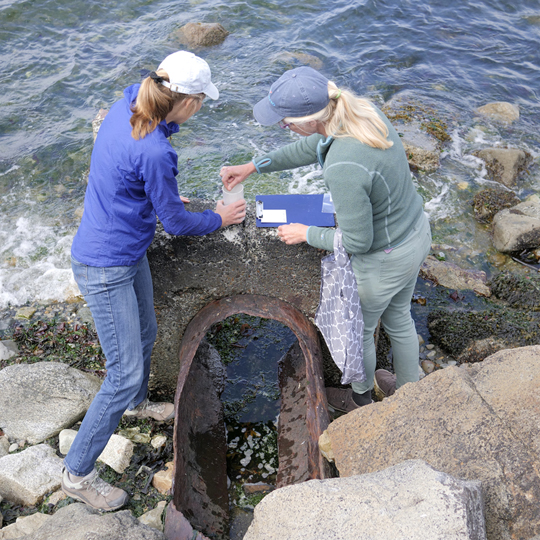 In this new campaign, Friends added E. coli bacteria detection to the stormwater monitoring activity (photo left). E Coli is a bacterium that is indicative of the presence of fecal coliform in the water and is the standard way to detect it in water source monitoring. There is a possibility that perhaps 10% of our stormwater outfall pipes also discharge E. coli bacteria in concentration levels that harms marine life. Shellfish beds are common around our shorelines and can experience closures when levels are too high. High E. coli concentrations render the shellfish harmful to humans, birds, and animals.
In this new campaign, Friends added E. coli bacteria detection to the stormwater monitoring activity (photo left). E Coli is a bacterium that is indicative of the presence of fecal coliform in the water and is the standard way to detect it in water source monitoring. There is a possibility that perhaps 10% of our stormwater outfall pipes also discharge E. coli bacteria in concentration levels that harms marine life. Shellfish beds are common around our shorelines and can experience closures when levels are too high. High E. coli concentrations render the shellfish harmful to humans, birds, and animals.

 Data from the laundry study and the weathering study was used to create a reference library of spectra and a shedding catalog for the most common textiles used in outdoor apparel, a valuable resource that may help researchers to identify microscopic textile fibers and trace pollution back to its source.
Data from the laundry study and the weathering study was used to create a reference library of spectra and a shedding catalog for the most common textiles used in outdoor apparel, a valuable resource that may help researchers to identify microscopic textile fibers and trace pollution back to its source.